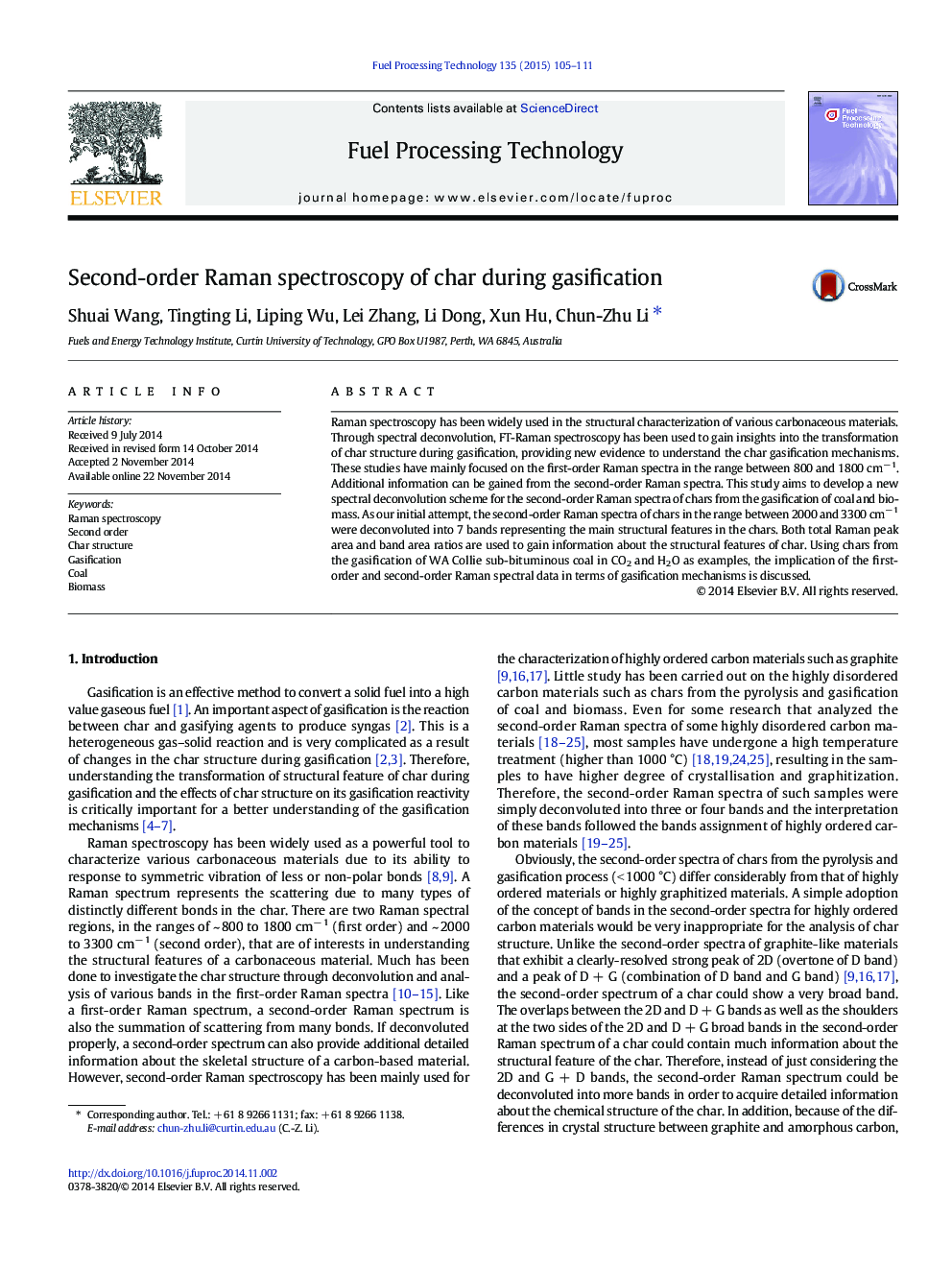| Article ID | Journal | Published Year | Pages | File Type |
|---|---|---|---|---|
| 209408 | Fuel Processing Technology | 2015 | 7 Pages |
•Second-order Raman spectroscopy can be used to characterize chars.•A new deconvolution method has been established to characterize char structure.•The char-H2O and char-CO2 gasification reactions follow different mechanisms.
Raman spectroscopy has been widely used in the structural characterization of various carbonaceous materials. Through spectral deconvolution, FT-Raman spectroscopy has been used to gain insights into the transformation of char structure during gasification, providing new evidence to understand the char gasification mechanisms. These studies have mainly focused on the first-order Raman spectra in the range between 800 and 1800 cm− 1. Additional information can be gained from the second-order Raman spectra. This study aims to develop a new spectral deconvolution scheme for the second-order Raman spectra of chars from the gasification of coal and biomass. As our initial attempt, the second-order Raman spectra of chars in the range between 2000 and 3300 cm− 1 were deconvoluted into 7 bands representing the main structural features in the chars. Both total Raman peak area and band area ratios are used to gain information about the structural features of char. Using chars from the gasification of WA Collie sub-bituminous coal in CO2 and H2O as examples, the implication of the first-order and second-order Raman spectral data in terms of gasification mechanisms is discussed.
Graphical abstractFigure optionsDownload full-size imageDownload as PowerPoint slide
